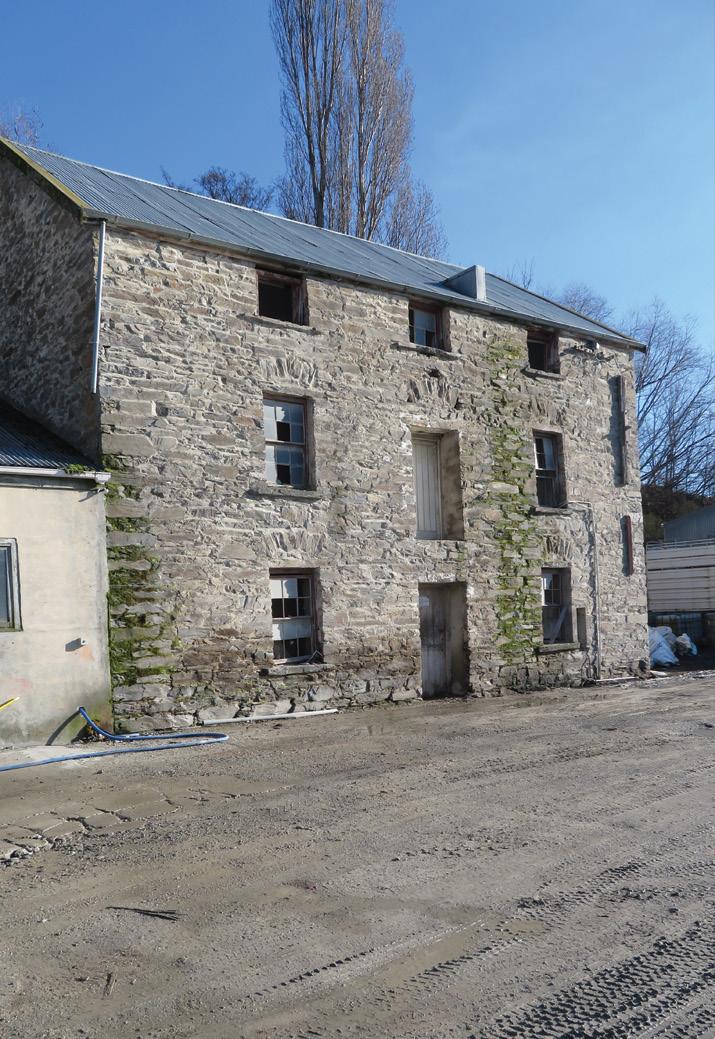
12 minute read
Rally Snippets 37 Milling Around - Central Otago Branch 38 Balcairn Trial– Banks Peninsula Branch
RALLY SNIPPETS
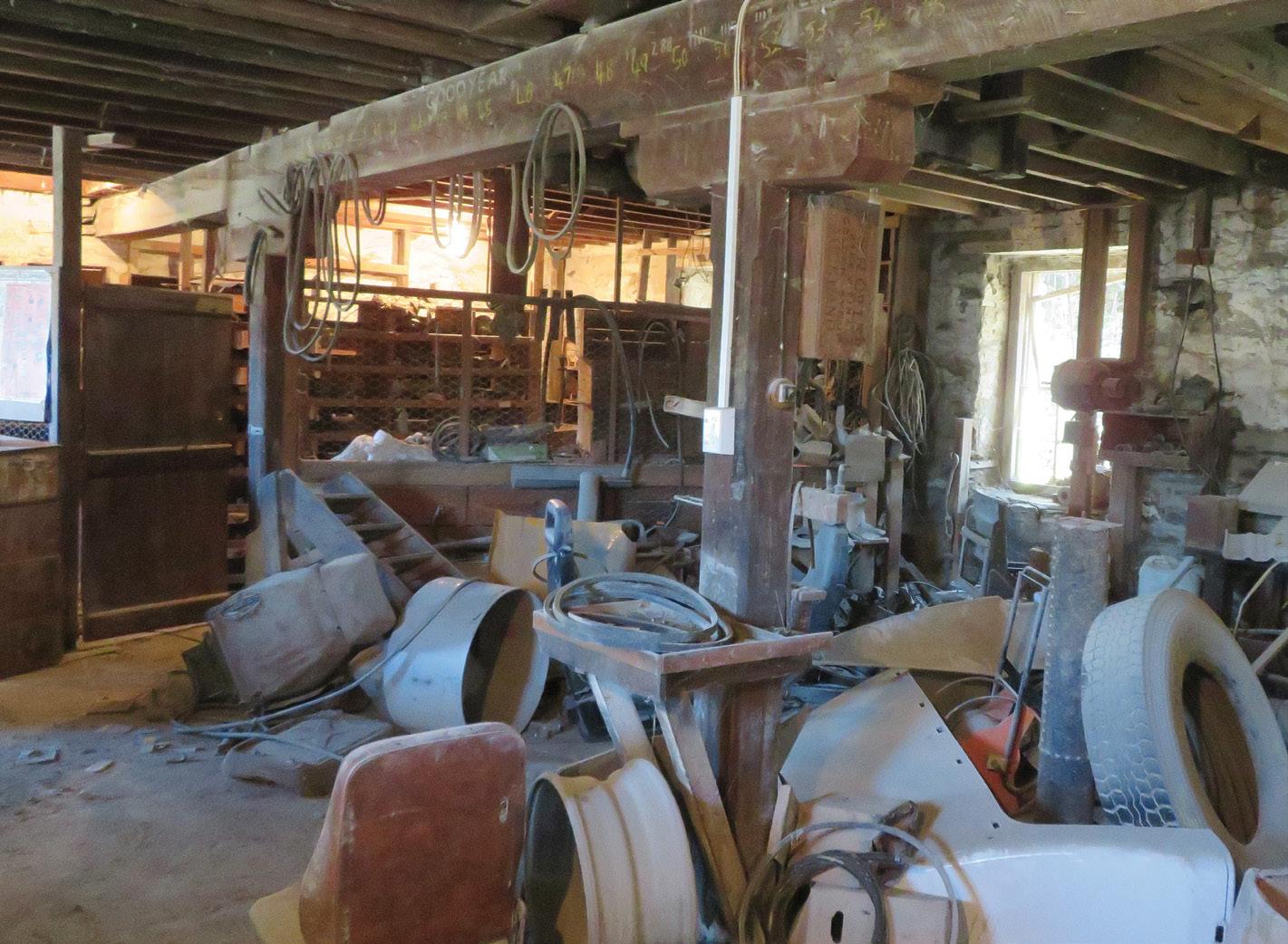
s Central Otago: Midweek adventures.
MILLING AROUND
Central Otago Branch Words Graham Taylor
Fantastic beasts and where to find them. Living in the Luggate area and fairly well acquainted with its history as the hub of the Upper Clutha District, I was part of the branch’s Wednesday group who were invited to check out the interior of the old Luggate flourmill.
This was opened in 1861 by Anderson and McIntosh to process oats, and later wheat, from the rich farmland of Mt Barker and Hawea Flat with one hundred bushels to the acre not uncommon. To quote from The Wanaka Story, “there was cause for rejoicing when the new flourmill was opened at Luggate. It was built of stone three stories high”. Their advertisement read, “The mill is fitted with the latest machinery, and the utmost care will be exercised in the milling”.
In anticipation of the opening of the mill, large crops of wheat were grown throughout the district.
Our part on Wednesday was at the invitation of the mill’s owners Upper Clutha Transport, formerly WM Reid & Co 1905, then Reid’s Transport, to have a look through the former mill as it had been used as a workshop and parts storage for the transport company. My memory of the mill in the 1950s recalls that Reids were also agents for Rover and Citroën cars at the time my father was agent for Austins at Hawea Flat and Bill Manson the Ford dealer in Wanaka. The shelves revealed little treasure, a Landrover cylinder head, some gaskets, bearings, bolts, and some early equipment. Most of the spares were for Volvo trucks. The shelves were made of oil and petrol boxes with well preserved Plume and other logos. These along with some of the old pulleys and tools were retained for future displays by Upper Clutha Transport. Hopefully the mill will have a new life as it is one of very few, and the only substantial historic building in the Upper Clutha District.

Here at Beaded Wheels we are always on the lookout for a good article for a future issue. To encourage you to put pen to paper two lucky authors or photographers per issue will win a limited edition Beaded Wheels cap.
Beaded Wheels
writers wanted
Alas we are not in the position to provide financial recompense for services rendered but we are sure you will be compensated by the satisfaction of seeing your words and photos in print. Email your articles and ideas to: beadedwheels@vcc.org.nz High resolution digital photos are preferred. Please contact me if you wish to discuss an idea for an article. Kevin Clarkson, Chairman Beaded Wheels Editorial Committee. Phone 021 0270 6525 or email kevin@vcc.org.nz Our lucky winners of the Beaded Wheels caps for this issue are: Bryan Abraham, John Henderson
BRAGGING RIGHTS
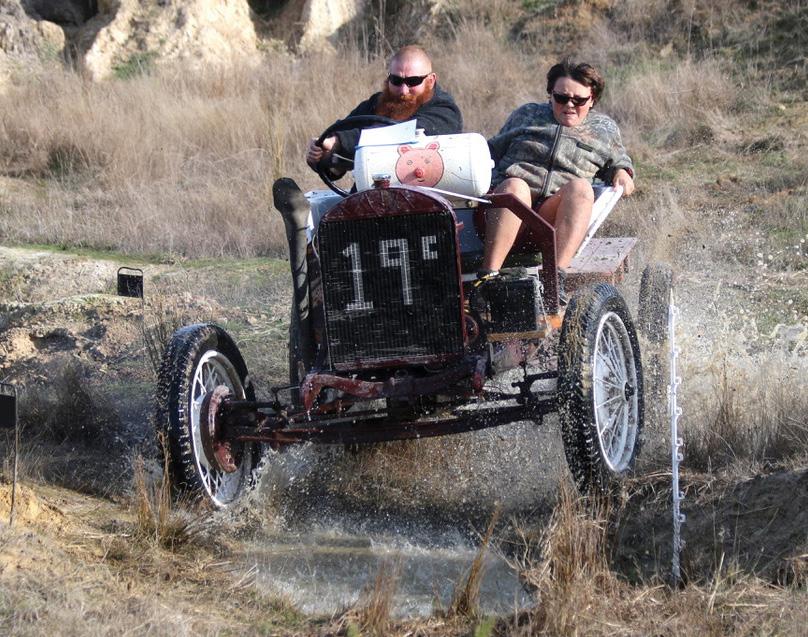
THE BATTLE FOR BALCAIRN 2021
Banks Peninsula Branch Words and photos John McDonald
Knocked up during the 2020 Covid lockdown, this Model A based creation from the Molyneux brothers in full flight.
A fairly dry course greeted the organisers this year, so some regular stages weren’t used, and the dreaded Stop/Start was introduced to a couple. There was a good entry of 27 drivers, with a few new cars too, and the organisers had set out six events, rather than the usual five.
It was great to see Bill and Ben the Hot Rod men (aka the Molyneux brothers) in their matching Model A raceabouts, and Griffin Tucker was in the ex Graham Sword Bond/Morris Minor lowlight creation, a disastrous combination if ever there was one. When Graham was competing, this tragic hybrid normally scored one or two, as it seldom got off the line, but this year it got a few fives and sixes, so some top level tuning had clearly taken place. There was a new Morris 8 special driven by Kevin Mercer, and a Ford Prefect based offering courtesy of Warwick Marshall. Peter and Josh Thwaites had brought the E Type Cockroach down from Blenheim, and Alan Giles from Greymouth was in the ex-Avon Hyde Austin. Thomas Mauger, in the A7 that grandfather Warner put together many years ago was looking competitive, and told me he’s been coming to Balcairn as a spectator since he was about six, when he was a Mauger minor.
When Josh Thwaites effortlessly scored the maximum on event one, Flemings Flanders, the old hands looked thoughtful, and when father Peter did the same on Jelfs Shelf, it looked as though this was to be the year of the E Type Cockroach. But Thomas Mauger was already looking good, and of course the evergreen Avon Hyde was taking no prisoners. The Stop/Start on the final hill at Jelfs Shelf, did its job, and only a few got a maximum score. To watch the Dawber Pontiac plunge down the first hill on Jelfs Shelf, wheels locked and gaining speed was quite inspiring and the crowd loved it, showing their appreciation in their usual good natured banter.
Stage three, The Swamp, was great if you were an early runner, and a few lucky drivers got 20, but as the ruts deepened, progress slowed, and the Land Rover club were kept busy on towing duties. One of the wonderfully unfair things about Balcairn is starting order, as often so much depends on it, and this stage proved that, with even the lighter cars getting stuck. There was quite a steep inverted V entry to the pond, and many cars bottomed out, leaving wheels waving in mid air, as exhaust pipes bore the brunt. George Kear wasn’t having a good day. The MG/Ford special he whipped up in his shed over lockdown was running on three, he slipped over in the mud, and his car kept getting stuck. To add insult to injury, son Fraser beat him on a few sections.
After lunch we went up yet another hill to a section we’ve only used once before. Section one was in a nicely muddy clay bottomed dam, with navigation a key component. Andrew Roxburgh in the Marshall Prefect achieved some alarming angles and required some very technical skills from two Land Rovers to extract him from the primeval ooze, and yet again, as the course cut up, the scores went down and the Land Rovers worked harder.

“Drive it like you stole it”, the Stevenson Austin under pressure.

We can do it!

The same could be said for the next stage, which involved zigzagging across a sloping paddock with a bog down the middle. There was a way through, but there is a bit of lemming in many competitors, as they cheerfully plunged thoughtlessly into the deepening ruts, and yet again, the Land Rover lads continued to show their skills. Avon Hyde, Thomas Mauger and Brad Govan showed that you could get to 14 or so if you applied some logic to the task in hand.
The final stage, Newells Nemesis was far too easy last year so the dreaded Stop/Start was used to keep egos in check. It proved most successful with no one, not even the big guns getting 20. Some didn’t even manage the first turn, so the field was well spread out. Play over, the cars were trailered to the Anglers Arms in Sefton, where excuses were made, organizers blamed, and to hear the results. And they were convincing. A major victory for Thomas Mauger with 127 points, well clear of the rest of the field. Avon Hyde was 2nd, with 103, and Allan Giles and Josh Thwaites shared 3rd, with 99 points each. It’s the first time Thomas has won the coveted Old Boot Trophy, following in the footsteps of Uncle Phil and grandfather Warner. Three generations competing in the same event is rather special; Thomas was thrilled with his victory, as were his parents, who were there to cheer him on. We look forward to seeing Thomas and his grandfather’s car defend the trophy in 2022.
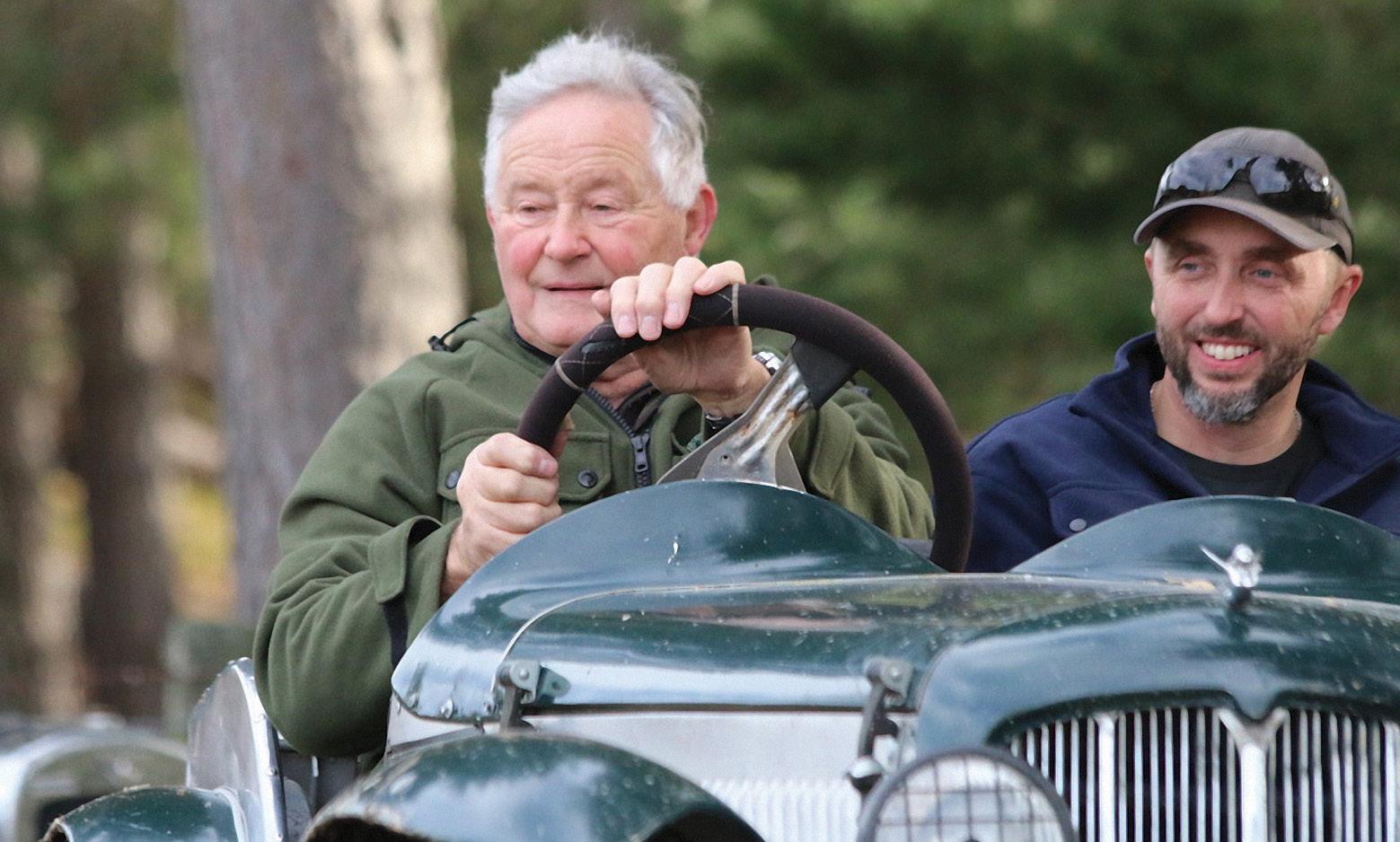
The Dawber Pontiac runs down a marker post.
Dave Trompetter swinging into the corners.
Our club archive is located at the VCCNZ National Office in Christchurch and is open to visitors on Friday mornings. It contains a wealth of historic material, a lot of which has been digitised. It is well worth a visit or if you have any queries do get in contact with our archivist Don Muller phone 03 385 6850 or archivist@vcc.org.nz.
A TALE OF EARLY AA TROPHIES
Whenever someone new visits the VCC Archive, I always make a point of showing them the two early Automobile Association cups that have been on loan from the Automobile Association to the Archive since early 2000. One is dated 30/12/1910 and the other 15/3/1912.
First a little history on the original cup which was presented by Star Engineering of Wolverhampton England to the Canterbury Automobile Assn, as it was then known, (CAA) in 1908 for the Private Owners Class and was known as the Star Silver Cup and cost 105 Guineas. The rules for the Canterbury Automobile Assn Reliability Trial were that, the Trial was timed from start to finish with points deducted for every minute the car was at rest. The objective was to make a nonstop run for each of the motoring days. An observer travelled with each entrant and deducted points from the 1000 points given at the beginning of the Trial. There was also a gold medal presented for the best fuel consumption.
Both of the cups were won by the same person, Neil C Gilchrist from Oamaru whose father was John Gilchrist 1830-1906, the 1st Mayor of Oamaru in 1866 for one year. He lived on 300 acres at Brookfield, a 17 room homestead at Waiareka west of Oamaru, which stayed in the family until 1965. Brookfield was used as a function centre, where in 1970 a 60th Anniversary dinner was held during a reenactment of the rally. Today it is known for its garden tours, Brookfield Gardens. Over the years the 1910 trial from Christchurch to Dunedin return, has been re-enacted in 1970, 1980, 1990 and 2010.
In the early 1900s Neil Gilchrist entered a number of reliability events with some success riding a 3 ½hp Triumph motorcycle. In 1909 he was placed second in the CAA Reliability Trial driving a 15hp Talbot. On 30 December1910 the CAA Reliability Trial was a run from Christchurch to Dunedin and return, a distance of 503 miles with 12 cars entered. Neil C Gilchrist entered and won the Star Silver Cup plus the CAA cup for first prize, which is one of the cups featured in this article. He was driving his 15hp Talbot. On 15 March 1912 the CAA Reliability Trial was run from Christchurch to Hanmer return (the long way) a total of 303 miles with 24 entrants. Once again N C Gilchrist Esq, was successful and won the event, this time driving his new 26hp Silent Knight Minerva. He won £150 plus the Star Cup, £30 plus the 2nd CAA cup that we have at the Archive as well as a gold medal. The inscription on the CAA cups reads, “Canterbury Automobile Assn, Private Owners Reliability Trial, 1st Prize awarded to 15Hp Talbot Owned and Driven by, Mr Neil C Gilchrist Esq, Dec 30th 1910,” the 1912 cup is similarly inscribed.
The rules stated that if the cup was won twice in succession or three times with intervals the winner would permanently retain the Star Silver Cup. At a meeting of the CAA on 27 March 1912 N C Gilchrist offered to donate a 50 guinea cup, to be known as the Gilchrist Cup and to be awarded at CAA Motoring Reliability Trials, with the following rules: Open to private owners of vehicles; driven by the owner; having highest aggregate marks for reliability and petrol
consumption per ton miles; should be the winner.
The Star Silver Cup was donated to the AAC in 1952 by Neil’s sisters along with the two CAA first prize cups which are proudly displayed at the Archive, I assume the Star Silver Cup is still retained by the AA?
If you would like to see these cups at the Archive, please give me a call.

s N C Gilchrist. winner of the 1910 CAA Cup driving 15hp Talbot.
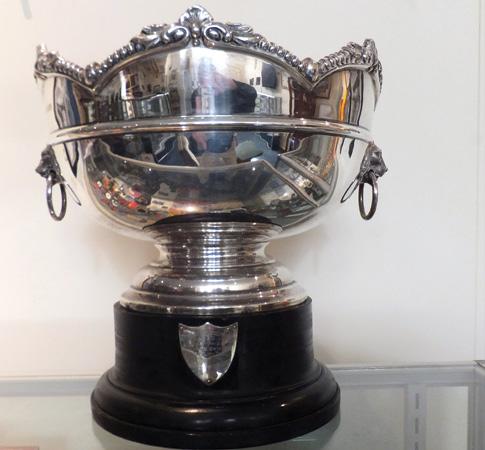
s N C Gilchrist, winner of the 1912 CAA Cup, driving a 26hp Minerva. s N C Gilchrist, Star Silver Cup winner, 1912 Silent Knight
Minerva.

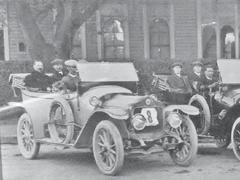
LEITH NEWELL
Leith Newell, one of our great motoring historians, wrote many interesting motoring articles in Beaded Wheels over many years. For more detailed information about these rallies please refer to Beaded Wheels 68 Feb 1971 pages 14-17 for the 1910 Reliability Trial and Beaded Wheels 201 April 1993 pages 34-36. for the 1912 Reliability Trial. Both these issues are well documented with entrant and diary information. Copies are available on the club website at vcc.org.nz
An update to the Unsung Heroes in Beaded Wheels 371, I have had many phone calls. I was pleased to hear from Derek Upton who was one of the field kitchen staff. I mentioned to him about the camp and field kitchen tent at Mt Cook under Mt Sefton, his reply was, yes, the tent was fine for a while, until a strong gust of wind blew the tent down. Driving tent pegs into a glacier is not the best place to erect a large tent. David North from Gore Branch informed me that one of the Gore Branch Patrons, Neil McVicar, was the Shell tanker driver at the 1965 Rally and is still very active in local VCC events. I also sent a copy of the Beaded Wheels report of the 1965 Haast Rally to a member to read to his unwell father. It was nice to renew old memories.

s Mt Cook camp with the field kitchen tents and Mt Sefton in background. Ron Jacobs, 1923
Ansaldo.
Don Muller Archivist
archivist@vcc.org.nz










